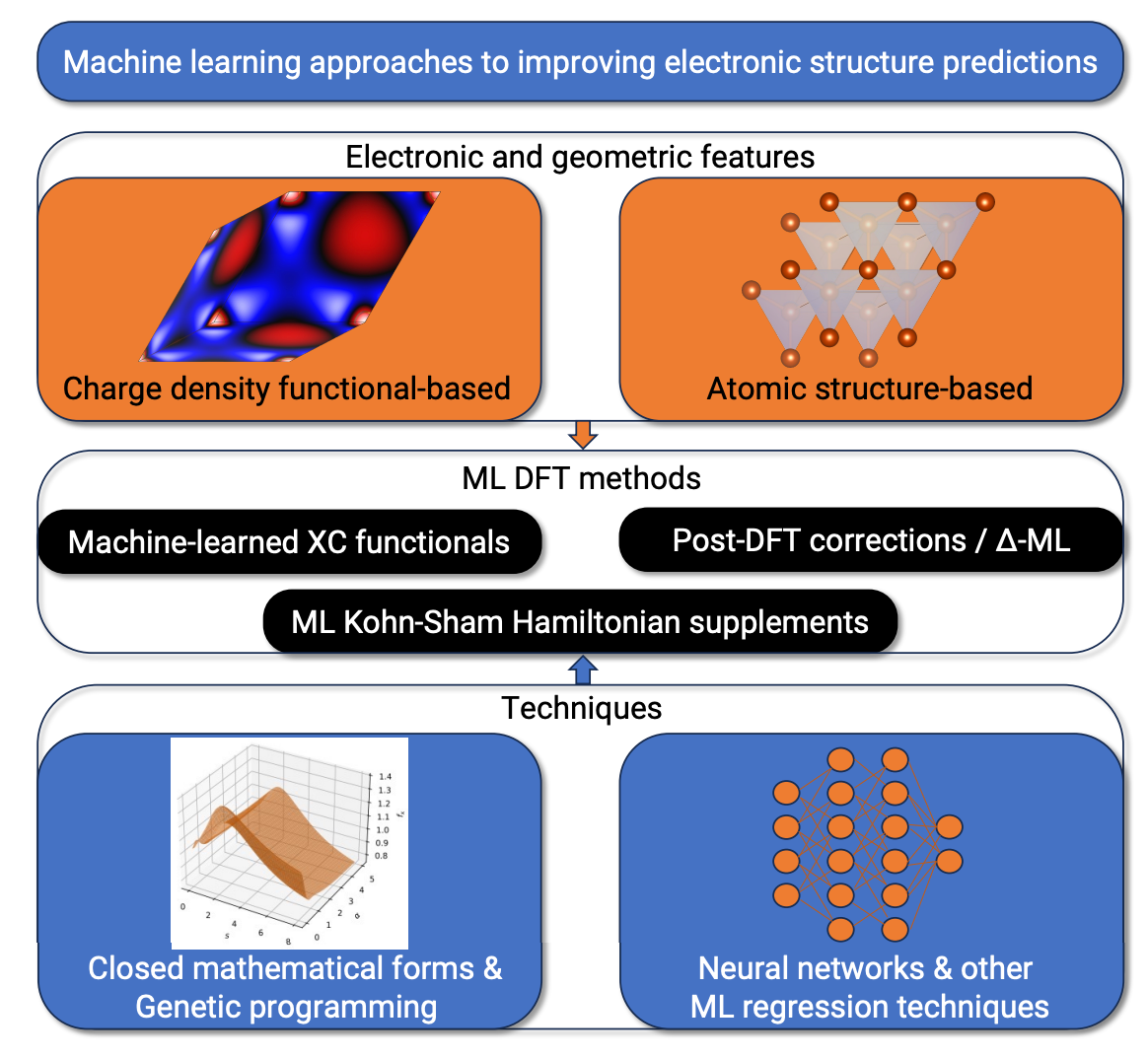Enhancing precision in computational chemistry with machine learning
A pivotal aspect of modern computational chemistry is Density Functional Theory (DFT). DFT simplifies the electronic structures of molecules and condensed matter systems by using electron density instead of wavefunctions, making it computationally feasible for complex systems. Understanding these electronic structures—how electrons are arranged and their energy levels within atoms and molecules—is crucial for predicting material properties such as conductivity, reactivity, and stability.
DFT's accuracy hinges on how well it approximates the exchange and correlation energies, terms that describe interactions among electrons. Traditional approaches, while useful, often fall short, especially in complex materials, due to oversimplified assumptions in these terms.
Machine learning offers a promising solution to these limitations by learning from extensive datasets of precise quantum chemical calculations. This integration has led to the creation of machine-learned functionals, which use machine learning algorithms to more accurately approximate the exchange-correlation functional in DFT. These new models can adapt to various chemical environments and predict new material properties with higher precision and better transferability across different chemical systems.
Machine-learned functionals have been developed to directly learn from high-quality reference data, capturing complex dependencies overlooked by traditional methods. This has significantly improved the reliability of electronic structure predictions, reducing errors and accelerating the discovery and design of new materials. The learning process includes training algorithms to minimize discrepancies between predicted and actual data, enhancing the functional’s accuracy in predicting the energy, electron densities, and other properties of systems.
A recent review by J. Voss (preprint here) explores into the integration of machine learning within computational chemistry, particularly for enhancing the accuracy of density functional theory applications. Voss's work underscores the potential of machine learning not only to accelerate atomistic simulations but also to refine the predictive capabilities of DFT. This scholarly review serves as a crucial resource for understanding both the progress and the challenges in the field.
Despite advancements, the effectiveness of ML-enhanced DFT methods heavily relies on the quality and breadth of the training data. These models often struggle with extrapolating to chemical systems that are underrepresented in the training sets. The ongoing challenges in ensuring model transferability and the availability of accurate training data are critical areas for future research.
In conclusion, integrating machine learning into DFT represents a transformative development in computational chemistry, providing enhanced precision and efficiency in simulations. As machine learning methodologies evolve, they promise to unlock new capabilities in material prediction and design. Ongoing research into both the theoretical foundations of DFT and the practical application of machine learning techniques is crucial for realizing the full potential of this interdisciplinary approach. The continuous refinement of these techniques is essential for reaching chemical accuracy and correcting inherent limitations in traditional DFT methods.




